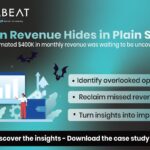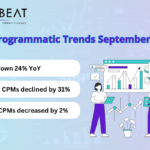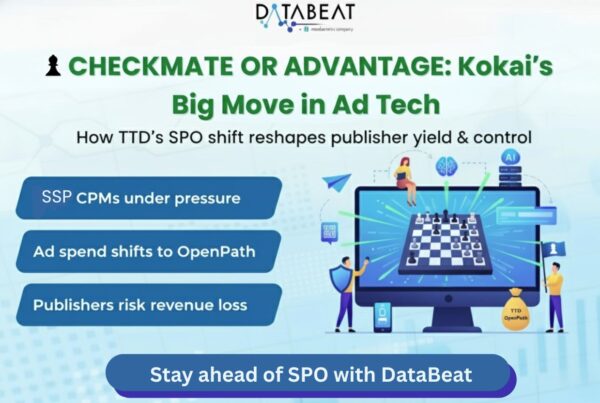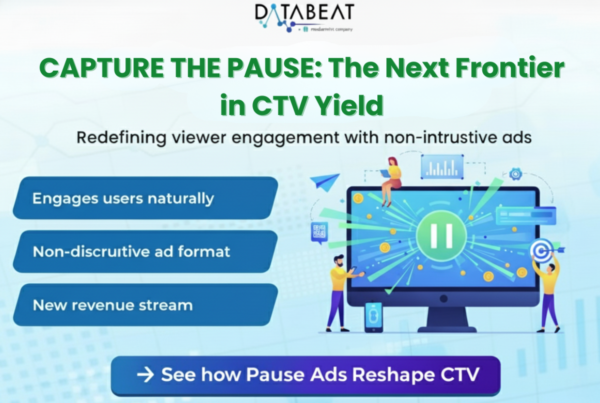
What is Traffic Shaping?
Traffic Shaping is an ML-driven optimization technique that predicts an ad impression value in real time and directs high-value traffic to the right advertisers. This enhances supply value, reduces network costs, and maximizes revenue for ad exchanges handling high QPS.
How does it work?
Think of traffic shaping as preparing a dish, as the chef wants to put the best ingredients into the dish at the right time to improve the taste of the dish. In the same way traffic shaping allows to manage ad inventory in real time making sure that high valued ad slots are offered to best performing partners at the right time.
Request by bidder: Every publisher has a unique adapter, publishers can set a few benchmarks in SSP’s prebid code to regulate how and where ad requests are sent. We can set up floor prices making sure to accept the best offers for the valuable inventory.
Selective platform use: We can choose partners strategically that frequently deliver good results, instead of requesting all the partners.
Selecting ad slot: Just like a chef choosing the finest ingredients for a dish, one can decide which placements should be offered programmatically based on current traffic and engagement.
Auction duplication:
Auction duplication is associated with advertising in which many bid requests for a specific ad impression are sent out, this is a problem within the digital advertising space. Here’s what you need to know and why that is a problem.
- Publisher-initiated: When publishers operate with many wrappers, exchanges may place duplicate bid requests.
- Exchange-Initiated: Exchanges themselves may create separate bid requests for each impression.
- Buyers cannot be able to distinguish among similar requests.
- It becomes complicated to synchronize server activity.
- Some bidders do not reach the floor prices, and competition decreases.
Impact of Auction Duplication on the Programmatic Ecosystem:
- For Advertisers:
- Higher Costs: For an auction, there exists competition and advertisement spending from advertisers to get reach to audiences who are already exposed to their ads. For any ad from the advertisers there will be multiple auctions placed against it which would result to higher bid amounts and wasteful spend.
- Wasted Ad Spend: Advertiser spent would get wasted as he would have to compete for the same screed space with a lot of other advertisers leading to over-generalization and over-spending.
- Decreased Campaign Efficiency: It makes more complex and optimization is difficult and lead to poor ROI.
- For Publishers:
- Lower Revenue: Same advertiser bidding for same inventory would lead drop in fill rate and might ended on getting the inventory fill with low value
- Complexity of Running Auctions: The simultaneous presence of multiple bids creates complications, reducing the publisher’s effectiveness in managing inventory and yield optimization.
- Lower Value of Inventory: Variable demand makes it difficult to secure premium bids, thereby leaving inventory with unmatched monetary value.
- For Users:
- Ad Fatigue and Poor Targeting: Repeated display of ads from the same advertiser through various auctions leads to the ad fatigue felt by users, which harms user experience.
- Increased Latency: Duplicate auctions tend to slow down page loading and serviceability issues for the website, hence having an adverse effect on the user experience.
- Privacy Data:
- Increased Risk of Data Leekages: Auction duplications increase the number of entities handling said user data, which compromises privacy, and creates immense difficulties when it comes to compliance with regulations like GDPR and CCPA, etc.
Strategies for Publishers to Optimize Supply Path: Supply Path Optimization
In parallel with a few other things, this is something that publishers can do to manage auction duplication:
- SSP Optimization: Make integrations clean and simple such that there is only one good connection for an SSP to avoid redundancy.
- Elimination of Reseller Paths: Try to remove every redundant layer of resellers to increase profit retention.
According to DataBeat Sellers Report we have observed that that Tier 1 SSPs generally have a higher share of duplicated domains, especially where multiple intermediaries are involved. This results in auction duplication when Tier 1 SSPs are listed as resellers on domains where they already have direct connections. For more insights, check out the full report here.

- Directly Coal the Supply Focus: Work with inorganic DSPs to create and utilize the most transparent and effective supply paths.
- Avoid Bid Request Overload: Bid throttling should be adopted along with first-party data in auction pacing.
- Data and Reporting: Use log-level data to constantly monitor for and mitigate duplication.
- Set Up Floor Prices: Setting prices will mitigate the likelihood of undercutting from resellers by establishing a point of value.
The Need to Tackle Phantoms of Duplication in Advertisements In The Global Adtech Industry
Ad duplication disrupts advertisers and publishers, leading to inefficiencies.
- QPS Limits: Excessive bid requests hit DSP limits, reducing campaign performance.
- Revenue Loss: Multiple intermediaries eat into publisher and advertiser earnings.
- Server Strain: Duplication increases server load and ad spend inefficiencies.
- Auction Issues: Advertisers unknowingly bid against themselves, lowering auction quality.
- Overspending: Poor bid de-duplication causes unnecessary ad spend.
- Trust & Transparency: Reducing duplication boosts confidence and industry growth.
Eliminating duplication is key to efficiency, revenue, and long-term success.
Effective Strategies for Traffic Shaping
Traffic shaping is critical when uplinks in a network fill with traffic going out of an interface. If traffic shaping is not implemented, networks will drop or queue any traffic that cannot go out of an interface, and this will delay all packets or lead to suboptimal performance of mission-critical applications.
Traffic shaping allows network administrators to define which applications are lower priority and, as such, builds intelligence on which packets to drop or delay first. Generally, traffic shaping is a vital traffic management tool to provide high network performance.
- Deterministic Throttling: Set designated limits for every bidder, like restricting requests to no more than 10,000 per hour as a cap across the entire exchange or specific inventory such as geo, ad size, etc. This simple and direct method avoids the system and makes sure neutral access to inventory.
- Statistical Throttling: Evaluate demand side bid data covering geo locations and dimensions, by analysing bid rates and excluding lowest 10% to 20% of inactive bidders ad exchanges can monetize the auction process to prioritize more active participants.
- Predictive Filtering: Apply historical data to model bidders behavior and evaluate their likelihood of placing competitive bids. This method links advertiser domains to supply characteristics, like app/site, creative type, category, by analysing bid prices and floor prices, enhancing auction efficiency and focusing on higher value opportunities.
By implementing these traffic shaping techniques, ad exchanges can improve auction quality, reduce inefficiencies, and maximize revenue potential.
How DataBeat Helps with Auction Duplication and Traffic Shaping?
DataBeat provides advanced services to publishers and SSPs regarding auction duplication and traffic shaping. We make sure that programmatic auctions are conducted so that bid requests are precise and overly broad requests do not occur.
With DataBeat’s traffic shaping strategies, publishers are able to preserve a proper auction ecosystem and SSPs are able to increase bid request quality confidence and revenue as well. Our services help remove unnecessary bid requests and increase the transparency of the marketplace.
Would you like to learn more? Sign up for our webinar, where we discuss real life case studies and detailed topics concerning auction duplication, bid optimization, and traffic shaping. Remain competitive in the changing world of digital advertising with actionable intelligence shared from industry leaders.









